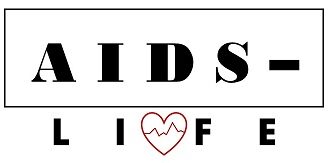Symptoms of HIV in men at different stages of the disease
HIV is a virus that attacks the body's immune system, destroying certain types of cells that help the body fight infection and disease. In this article we will look at the early signs and symptoms of HIV in men.
Symptoms of HIV infection in men in the early stages
In men, the initial symptoms of HIV infection are usually nonspecific. Early symptoms are often tolerable and are often mistaken for the flu or other mild illness. Approximately 80% of people who become infected with HIV experience flu-like symptoms within 2-4 weeks. This flu-like illness is known as acute HIV infection. Acute HIV infection is the primary stage of the disease and continues until the body creates antibodies against the virus.

Men may experience flu-like symptoms days or weeks after contracting the virus, which may include:
- fever;
- skin rash;
- headache;
- a sore throat;
- fatigue.
Less common early symptoms of HIV in men include:
- mouth ulcers;
- ulcers on the genitals;
- night sweats;
- nausea or vomiting;
- muscle pain;
- joint pain;
- enlarged lymph nodes.
Men may underestimate the initial symptoms of HIV and delay visiting a doctor until symptoms worsen and the infection has progressed.
The fact that many men do not seek timely treatment is one of the reasons that the human immunodeficiency virus affects men more than women.
Symptoms of HIV in men at later stages

Without treatment, HIV infection can eventually destroy a person's immune system. Once this happens, the disease progresses to stage 3 HIV infection, often called AIDS. AIDS is the last stage of HIV. A person at this stage has a severely damaged immune system, making him more susceptible to opportunistic infections .
Symptoms of stage 3 HIV in men may be as follows:
- nausea;
- vomit;
- persistent diarrhea;
- chronic fatigue;
- rapid weight loss;
- cough and shortness of breath;
- periodic fever, chills and night sweats;
- rash, sores, or lesions in the mouth or nose, on the genitals, or under the skin;
- prolonged swelling of the lymph nodes in the armpits, groin, or neck;
- memory loss, confusion or neurological disorders.
HIV symptoms unique to men
Symptoms of HIV are usually the same in women and men. But one of the unique symptoms of HIV for men is penile ulcers.

A rash is often one of the early signs of HIV in both men and women. It usually appears after fever and other flu-like symptoms and lasts about a week.
Although the HIV rash tends to appear on the upper body (arms, legs, back) and face, in men it can appear on the penis.
HIV can also lead to hypogonadism, a condition in which the sex glands produce little or no sex hormones. Symptoms of low testosterone, an aspect of hypogonadism, may include erectile dysfunction (ED).
Erectile dysfunction (ED) is the inability to get or keep an erection sufficient for sexual intercourse.
Forecast
HIV is a virus that weakens the immune system and makes the body vulnerable to opportunistic diseases and infections.
Although there is no cure for HIV infection yet, modern treatments can control the disease.
With proper and timely treatment, people with human immunodeficiency virus can live full and healthy lives. Early diagnosis and appropriate treatment help slow the progression of HIV infection and significantly improve quality of life.
For men, detecting early signs of HIV infection can help with rapid diagnosis and initiation of treatment.
